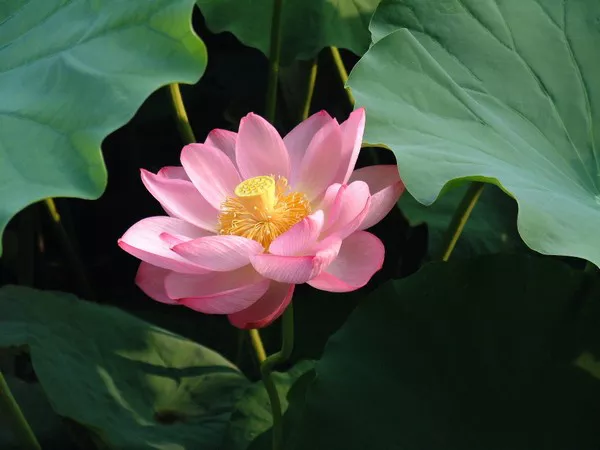The lotus flower, often associated with purity, beauty, and spiritual enlightenment, has captivated people for centuries. Its serene presence in ponds and marshes evokes a sense of tranquility and grace. While it is traditionally grown in natural aquatic settings, it’s entirely possible to cultivate the enchanting lotus flower in a bowl, bringing its allure to your own space. In this comprehensive guide, we will walk you through the art of nurturing a lotus flower in a bowl, from selecting the right container to ensuring its proper care and growth.
1. Choosing the Perfect Bowl for Your Lotus Flower
Before diving into the intricacies of lotus flower cultivation, it’s crucial to select the ideal container for your endeavor. The bowl you choose will play a significant role in the plant’s development. Opt for a shallow bowl with a wide surface area, allowing your lotus to spread its roots effectively. Ensure the bowl is at least 12 to 18 inches in diameter and 6 to 8 inches deep, providing ample space for the lotus to flourish.
2. Preparing the Potting Medium for Your Lotus Flower
Creating a suitable potting medium is essential for your lotus flower’s health and growth. Lotus plants thrive in rich, loamy soil with good drainage. A recommended mix includes equal parts garden soil and clay, combined with a layer of well-rotted compost. This composition ensures the right balance of nutrients and moisture retention for your lotus flower’s root system.
3. Planting Your Lotus Flower with Care
Now that you have your bowl and potting medium ready, it’s time to plant your lotus flower. Begin by filling the bowl with the prepared soil mixture, leaving about two inches of space from the top. Gently place the lotus tuber on the soil surface with its growing tip pointing upwards. Cover the tuber with an additional layer of soil, ensuring it is securely anchored but not buried too deeply. Water the soil thoroughly to initiate the growth process.
4. Providing Adequate Light and Temperature for Lotus Flower
Lotus flowers are sun-loving plants, requiring at least six to eight hours of direct sunlight daily. Place your bowl in a location where it can bask in the sun’s warmth, such as a south-facing windowsill or an outdoor spot with plenty of sunlight. Ensure the water in the bowl remains at a consistent temperature of 75 to 85 degrees Fahrenheit, replicating their native tropical habitat.
5. The Role of Water in Lotus Flower Growth
Water is a lifeline for lotus flowers, and maintaining the right water level in your bowl is crucial for their growth. Fill the bowl with water until it covers the soil surface by about two inches. As your lotus grows, you may need to adjust the water level accordingly. Keep an eye on it, ensuring that the soil and tuber are consistently submerged but not fully underwater.
6. Fertilizing Your Lotus Flower for Optimal Growth
To encourage healthy lotus flower growth, it’s essential to provide them with adequate nutrients. Begin fertilizing your lotus once it starts producing leaves. Choose a balanced, slow-release fertilizer with equal parts nitrogen, phosphorus, and potassium (N-P-K). Apply the fertilizer every four to six weeks during the growing season, but avoid over-fertilization, which can harm the plant.
7. Pruning and Deadheading for Vigorous Lotus Blooms
Regular maintenance is essential to ensure your lotus flower remains vibrant and productive. Prune away dead or yellowing leaves and spent flowers promptly. This not only enhances the plant’s appearance but also prevents decaying matter from contaminating the water and harming the lotus.
8. Managing Pests and Diseases for Lotus Flower
While lotus flowers are generally hardy, they can still fall victim to pests and diseases. Keep a close watch for signs of aphids, snails, or fungal issues. Promptly address any infestations or diseases with appropriate treatments to protect your lotus’s health.
9. Overwintering Your Lotus Flower
As winter approaches, it’s essential to prepare your lotus for the colder months. When temperatures drop below 50 degrees Fahrenheit, move your lotus indoors to a cool, dark place with temperatures ranging from 45 to 50 degrees Fahrenheit. Reduce watering but ensure the tuber doesn’t dry out completely. With proper care, your lotus will enter dormancy and reemerge with vigor in the following spring.
Conclusion
In conclusion, cultivating a lotus flower in a bowl is a rewarding experience that allows you to bring a touch of elegance and symbolism into your surroundings. From selecting the right container to providing the ideal growing conditions, each step in this journey contributes to the lotus’s flourishing beauty. Remember that patience and care are essential in nurturing your lotus flower, as it mirrors the growth of the human spirit and the pursuit of enlightenment. As you embark on this botanical adventure, you will not only witness the lotus’s breathtaking blooms but also deepen your connection to its timeless significance.


